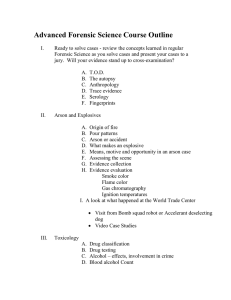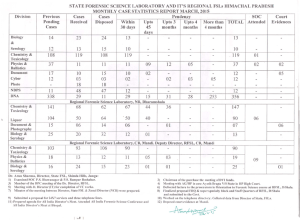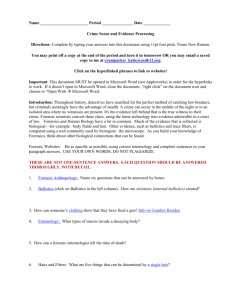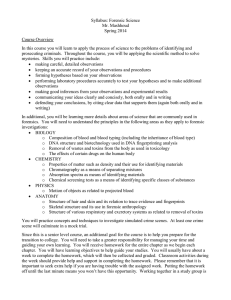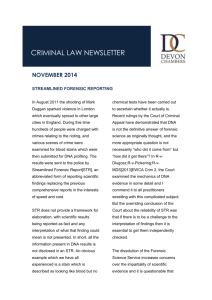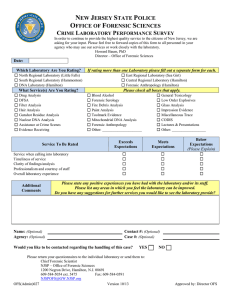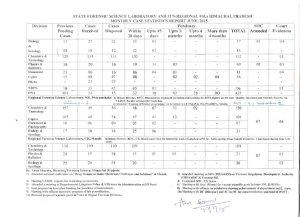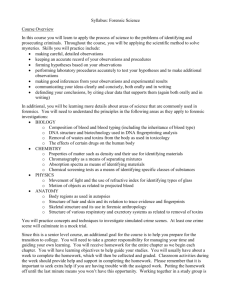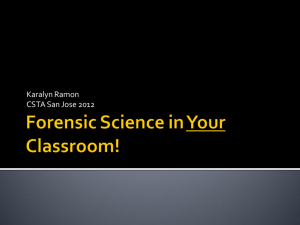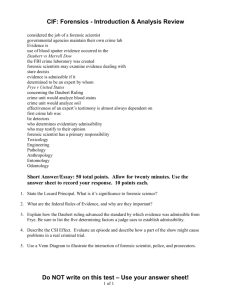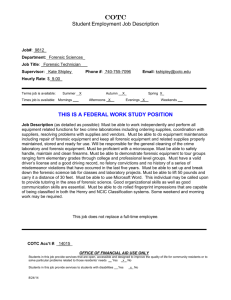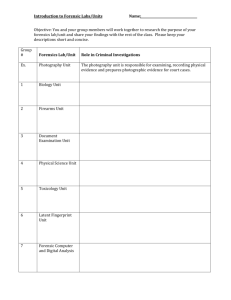forensic outline
advertisement
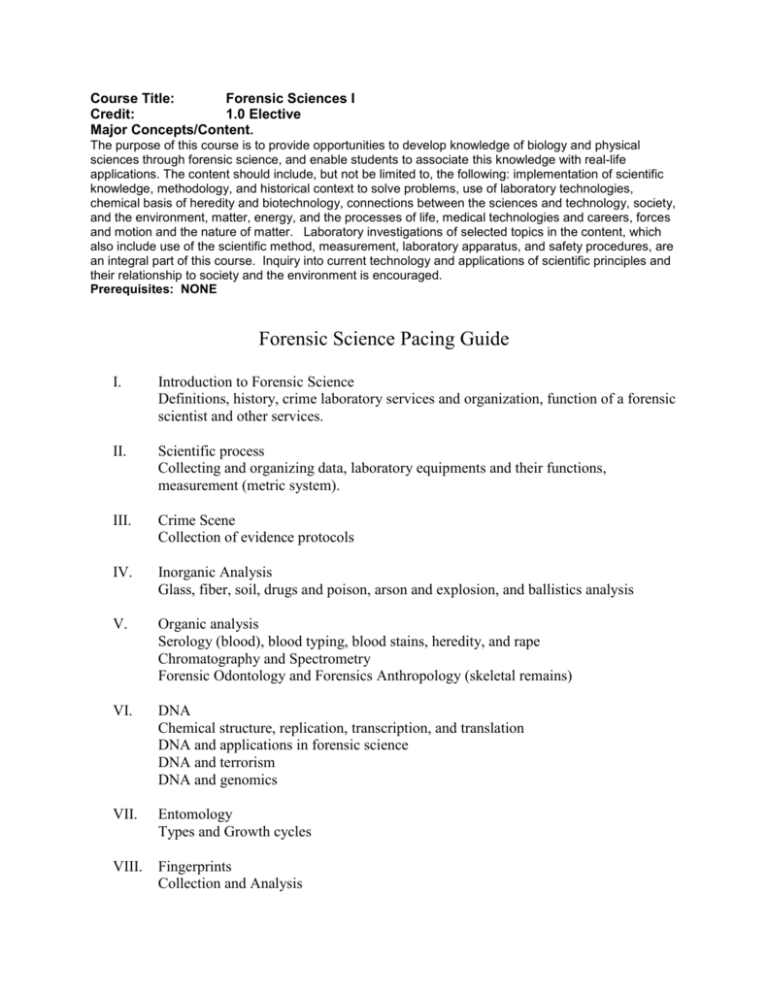
Course Title: Forensic Sciences I Credit: 1.0 Elective Major Concepts/Content. The purpose of this course is to provide opportunities to develop knowledge of biology and physical sciences through forensic science, and enable students to associate this knowledge with real-life applications. The content should include, but not be limited to, the following: implementation of scientific knowledge, methodology, and historical context to solve problems, use of laboratory technologies, chemical basis of heredity and biotechnology, connections between the sciences and technology, society, and the environment, matter, energy, and the processes of life, medical technologies and careers, forces and motion and the nature of matter. Laboratory investigations of selected topics in the content, which also include use of the scientific method, measurement, laboratory apparatus, and safety procedures, are an integral part of this course. Inquiry into current technology and applications of scientific principles and their relationship to society and the environment is encouraged. Prerequisites: NONE Forensic Science Pacing Guide I. Introduction to Forensic Science Definitions, history, crime laboratory services and organization, function of a forensic scientist and other services. II. Scientific process Collecting and organizing data, laboratory equipments and their functions, measurement (metric system). III. Crime Scene Collection of evidence protocols IV. Inorganic Analysis Glass, fiber, soil, drugs and poison, arson and explosion, and ballistics analysis V. Organic analysis Serology (blood), blood typing, blood stains, heredity, and rape Chromatography and Spectrometry Forensic Odontology and Forensics Anthropology (skeletal remains) VI. DNA Chemical structure, replication, transcription, and translation DNA and applications in forensic science DNA and terrorism DNA and genomics VII. Entomology Types and Growth cycles VIII. Fingerprints Collection and Analysis

